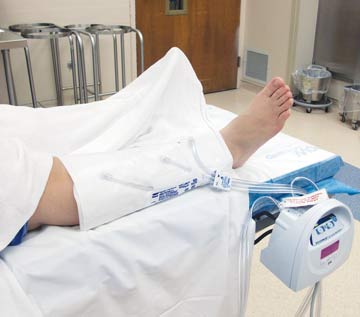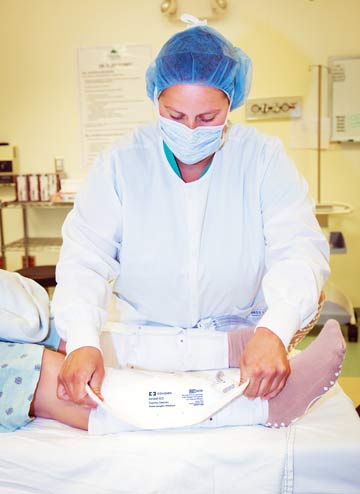Identify gaps that could be increasing the patient's risk for developing VTE. Our hospital's VTE committee reviewed our protocols and asked important questions that led to process improvement: What are we currently doing? What should we keep doing?
What are some new ideas? What are some ideas that won't work, or can't work, or need to put on the back burner?
Because of the urgency of our situation, we decided to focus on low-hanging fruit — namely, turning VTE prevention into a nurse-driven protocol, starting in pre-op. This provided nurses the autonomy to make decisions within their scope of
practice to improve patient outcomes.
The first intervention was the development and implementation of a nurse-driven sequential compression device (SCD) protocol.
Our surgeons fully supported the use of pre-op SCD application, but delays in obtaining their orders didn't always lead to timely application. The literature shows that SCDs should be on in pre-op, but in too many cases we weren't getting SCDs
on until the patient was in the operating room. This was the first change we implemented, and it paid dividends. It eliminated having to wait for surgeons' orders on the day of the procedure.
With administrative support, we added additional SCD pumps in our perioperative space. This allows for SCDs to be applied and running in pre-op. The OR nurse will then hook them up in the OR to run throughout the course of the procedure. When
the patient goes to recovery, the SCDs can be hooked back up again.
.svg?sfvrsn=be606e78_3)


.svg?sfvrsn=56b2f850_5)